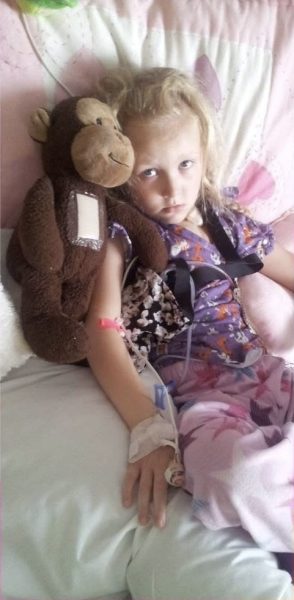Column: Animal Testing Needs to End
Alternatives to animal testing for cosmetic purposes have proven to be more accurate
December 4, 2018
Animal testing has been an alternative to human science experiments since Greek scientist Aristotle first took record of these studies. In the past few decades, scientists and cosmetologists have experimented with different chemical bases and testing those products on animals to make sure they are safe for humans to use. Over 25 name brands, including MAC, Maybelline and Dove use this type of testing and it is just plain unethical.
Scientists have found four alternatives to animal testing. These include using cell cultures, human tissue, computer models and volunteer studies.
Cell cultures are 3D cells that have been coaxed into miniature human organs, lungs and detail-oriented hearts. Human tissue can be made into skin graphs and reconstructive eye models to replace the cruel Draize test, according to People for the Ethical Treatment of Animals (PETA).
The Draize test, also called the rabbit irritation test, is a way to test irritation on the skin and eyes. The rabbits subjected to this test could suffer irritation, inflamed or bleeding skin, swollen eyes or blindness. According to PETA, computer models have recently been used to create virtual experiments and tests that have been proven to be more accurate than testing on animals.
The notorious Draize skin irritation test in rabbits is not very accurate and can predict human skin reactions only 60 percent of the time, but using reconstituted human skin is up to 86 percent accurate.
My least favorite of the four is volunteer studies. Companies have managed to bribe people into testing products. Testing products on members of our society can cause many problems. For example, in 2006 a trial called The Elephant Man was held in London. It was a new cancer treatment and eight men took part in this trial. Medical professionals assured that the only two symptoms were headache and nausea.
Shortly after the procedure took place, the men starting vomiting in severe pain. One man lost his toes and fingers and one of the other men had his foot amputated.
Studies have been done to compare the accuracy on both animal testing and the alternatives. Allergy tests in small rodents predict human reactions 72 percent of the time, while cell-based alternative test methods has been shown to accurately predict human reactions over 90 percent of the time, according to Cruelty Free International.
Pregnant rats also are used to determine whether chemicals or drugs can harm a developing baby. This detects only 60 percent of dangerous toxins while a cell-based alternative has a 100 percent accuracy at detecting very toxic chemicals.
The fact that so many name brand companies test on animals is horrific, especially since there are alternatives to this inhumane testing. Over a million animals are routinely killed each year as a result of these cruel experiments. This needs to end. If the alternatives are significantly more accurate, what is the point of animal testing?
PETA includes 6.5 million people in support of abolishing animal testing and abuse. PETA focuses attention on the industries which hurt animals the most: laboratories, food, textiles and entertainment. This organization works to educate the public with special events and protest campaigns. PETA also conducts cruelty investigations, rescues animals and does research on animal testing and abuse.
We Animals is a program in which photographers and videographers showcase animals in their natural environments. Founder of We Animals, JoAnne McArthur has the following quote throughout the website.
“Animals are not ours to experiment on, eat, wear, use for entertainment or abuse in any other way,” McArthur said.
Testing on animals is not only unethical, but it’s bad science, wasteful and unnecessary. Eighty-five percent of young women wear makeup daily and more than 25 of those companies test on animals.
Why let an animal suffer when there are other ways?









